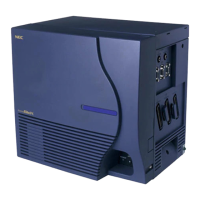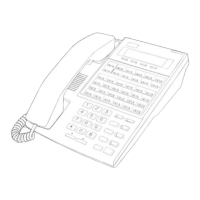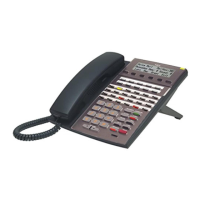Electra Elite IPK II Document Revision 1
Multiple Trunk Types 2 - 601
TIE Lines
10-09-01 DTMF and Dial Tone Circuit Setup
If the system has DTMF Tie Lines, be sure to reserve at least one circuit for analog trunk DTMF
reception (type 0 or 2).
H
Use the following as a guide when allocating DTMF receivers:
L
In light traffic sites, allocate one DTMF receiver for every 10 devices that use them.
L
In heavy traffic sites, allocate one DTMF receiver for every five devices that use them.
14-01-02 Basic Trunk Data Setup - Transmit CODEC Gain Type
14-01-03 Basic Trunk Data Setup - Receive CODEC Gain Type
Customize the transmit and receive levels of the CODEC Gain Types for each trunk as required.
14-01-13 Basic Trunk Data Setup - Loop Disconnect Supervision
Enable (1) loop supervision for each Tie Line that should be able to place outgoing calls.
14-02-01 Analog Trunk Data Setup - Signaling Type (DP/DTMF)
Set the outgoing signaling type for the tie trunk. The options are 0 (DP 10 pps), 1 (DP 20 pps)
and 2 (DTMF). To set incoming signaling, refer to Program 34-01-02.
14-05-01 Trunk Groups
Program tie lines of similar type into the same trunk group. The system uses trunk groups for
outgoing access to tie lines (i.e., Service Code 704 + group). Also see Program 34-05-01.
14-06-01 Trunk Group Routing
When a Tie Line user dials 9, the system uses the routes defined in this program. Refer to
Program 34-03-01.
20-01-05 System Options - DTMF Receiver Active Time
After answering the Tie Line call, the system attaches a DTMF receiver to the tie line for this
interval (0- 64800 seconds).
20-06-01 Class of Service for Extensions
Assign a Class of Service (1-15) to extensions.
20-09-01 Class of Service Options (Incoming Call Service) - Second Call for DID/ DISA/ DIL/ E&M
Enable (1) or disable (0) an extension’s ability to receive a second call from a DID, DISA, DIL, or
tie line caller.

